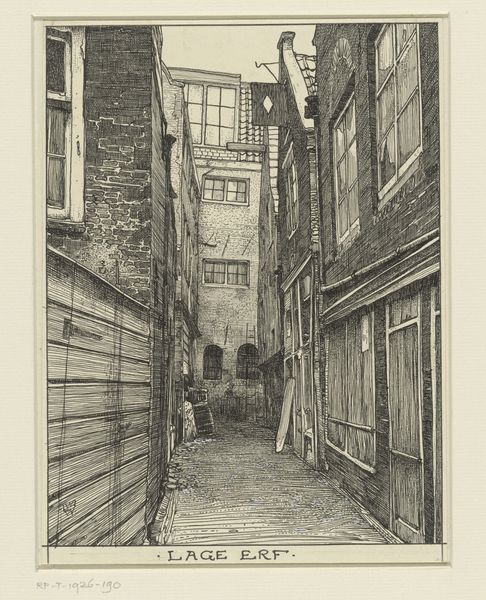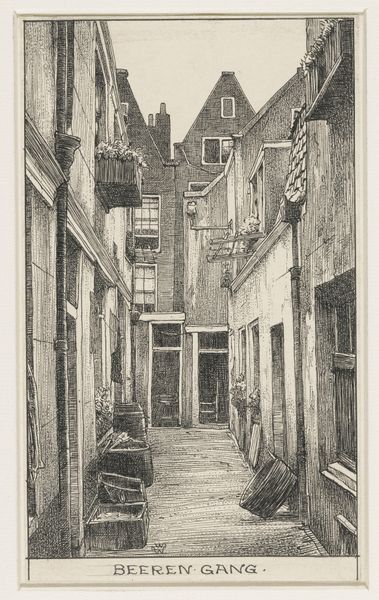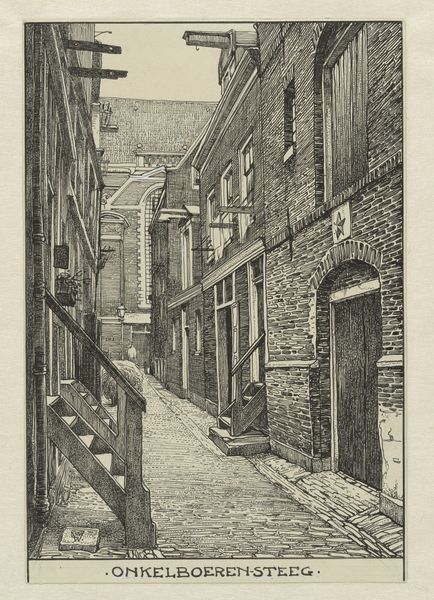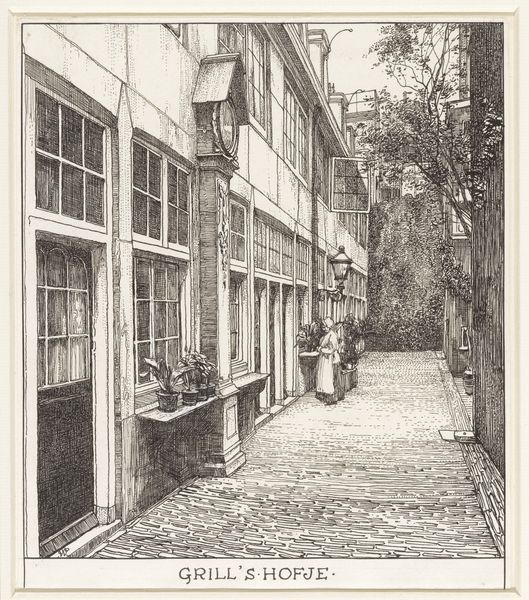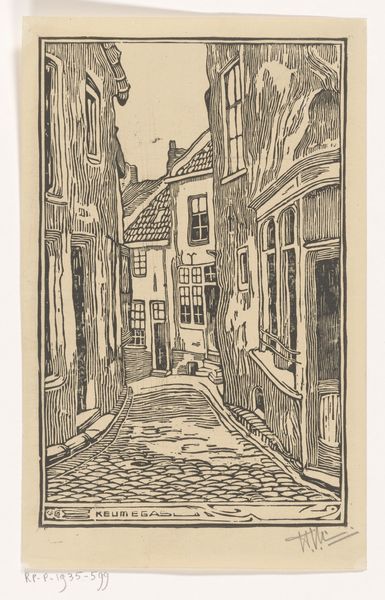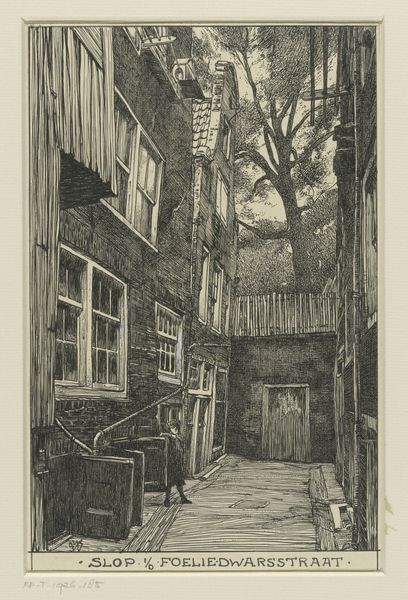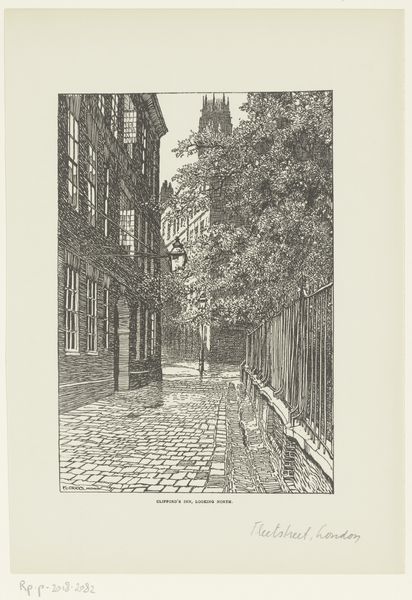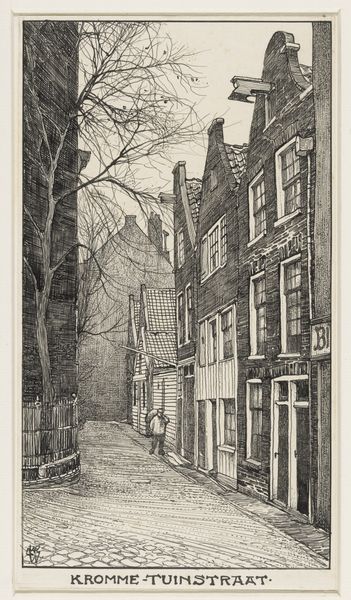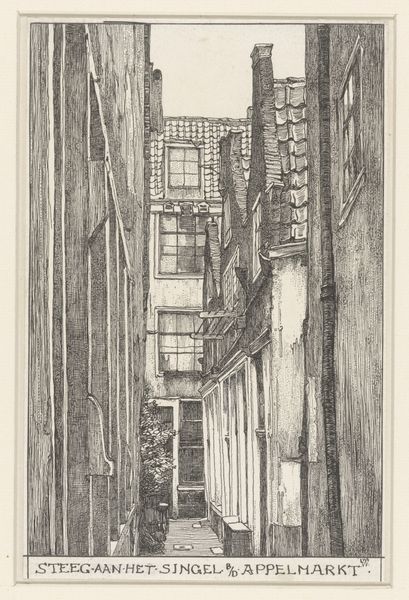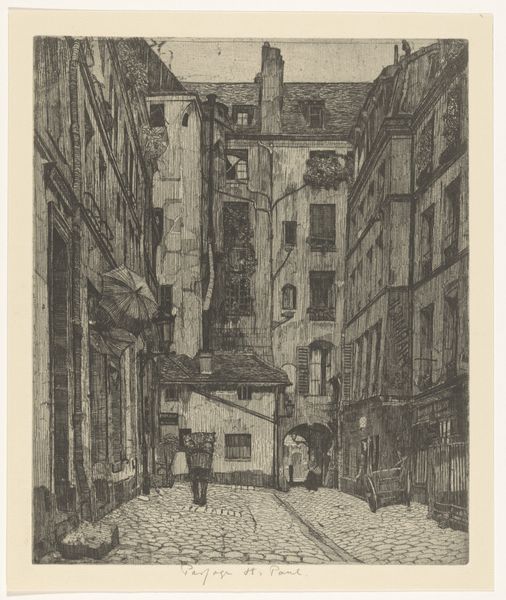
drawing, print, etching, ink
#
drawing
# print
#
etching
#
ink
#
cityscape
#
genre-painting
#
realism
Dimensions: height 198 mm, width 121 mm
Copyright: Rijks Museum: Open Domain
Curator: Welcome. Here we have Willem Wenckebach's "Bakkersgang te Amsterdam," an etching made with ink on paper sometime between 1870 and 1926. Editor: It feels incredibly intimate, doesn't it? Like peeking down a private alleyway. The strong lines create a really textured surface. It's more than just a snapshot of a place, it evokes a sense of lived-in history. Curator: Absolutely. The "Bakkersgang," or Baker's Alley, offers a glimpse into the daily life of Amsterdam’s working class. Wenckebach was drawn to these modest, often overlooked corners of the city, imbuing them with a sense of dignity. He’s known for celebrating these sorts of scenes in the context of rapid industrialization in Amsterdam. Editor: And think about the gaze involved in making this image. The decision to focus on this quiet, narrow alley amidst a bustling city becomes a political statement in itself. Who gets represented and whose stories are considered worthy? Wenckebach seems to consciously be elevating the everyday experience. Curator: Exactly. Realism as a movement was gaining traction during this period, emphasizing truthful portrayals of contemporary life. It was a departure from the idealized historical or mythological scenes favored in earlier academic art. Editor: Looking closely, I notice the figure in the background. She almost blends into the wall, highlighting how women, in particular, can become invisible in these urban spaces. There’s also a kind of beauty in the uniformity. This order emphasizes the lives and work being done within those uniform buildings. Curator: A subtle detail often missed. What do you make of the emphasis on shadow in the composition? Editor: The shadows really amplify the claustrophobic feeling. The stark contrasts suggest social tensions, but they also create this enveloping atmosphere. It’s a powerful way of saying, "look closer at what society often chooses to ignore." Curator: By capturing a mundane scene, Wenckebach offers us an invitation to contemplate the societal structures and human presence intertwined within it. Editor: Ultimately, this image is so impactful precisely because of the intersectionality of art, culture, and politics it puts on display. It lets the viewer ponder identity within Amsterdam as a whole.
Comments
No comments
Be the first to comment and join the conversation on the ultimate creative platform.
